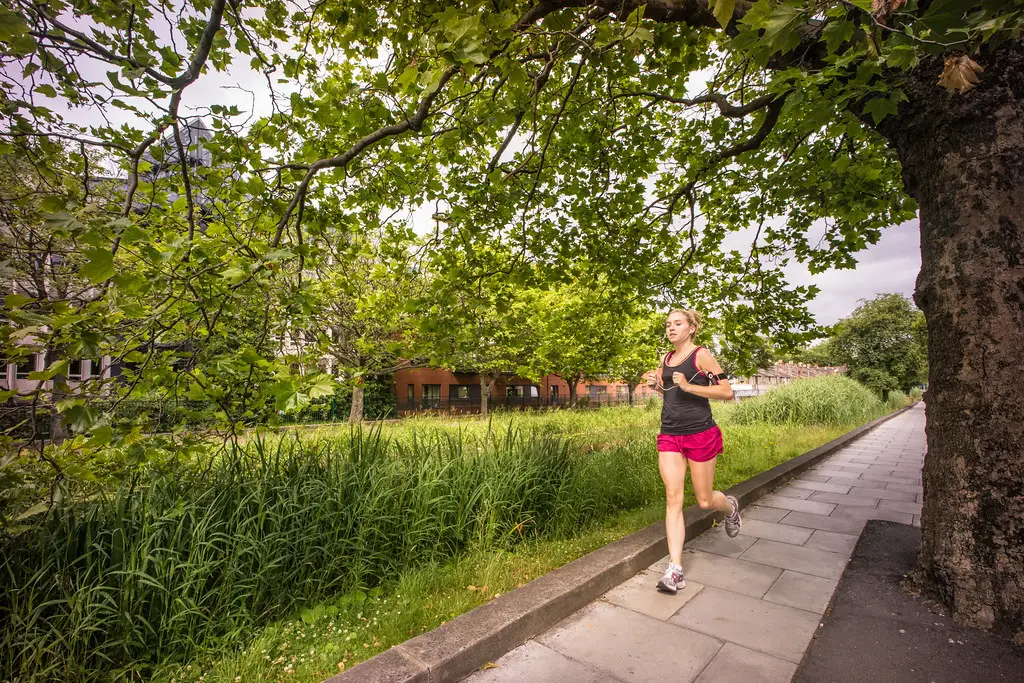The psoas is a deep, elongated muscle connecting the upper and lower body. It is the central muscle in a runner's life. However, frequently using this muscle can cause psoas pain.
In this article, we will talk about the link between psoas pain and running.
Focus on the psoas
The psoas is one of the most important muscles in the human body. It begins on the last thoracic vertebra, is attached by the lumbar vertebrae and ends on the crest of the femur. At the hip, the psoas is joined by the iliac muscle. Together they form the “iliopsoas” muscle, a powerful hip flexor. It is found on each side of the lumbar vertebrae.
This flexor muscle is also a weak external or lateral rotator. This contributes to the protection of our spine, stability and control of our posture. It is therefore the muscle of walking and movement of the body.
To learn more about the psoas (as well as exercises for pain relief), see the following article.
What role does the psoas muscle play during a run? ?
The psoas muscle is the most stressed muscle during a run. Each time the knee rises, it contracts to flex, and as the leg straightens backwards, it stretches.
During a run, the psoas has an eccentric activity which allows it to slow down the extension of the hip during the pushing phase. Indeed, the stored energy will be used to bring the thigh and the leg forward and the knee towards the bust to start a new stride.
By maintaining the sheathed posture and stabilizing the lumbar spine, the psoas also participates in the running economy. In fact, if the trunk is insufficiently sheathed, the psoas has to work harder and the risk of injury rises.
How does psoas pain manifest when running? ?
The gestures of running can have consequences such as pain, inflammation or stiffness of the psoas. Many athletes mainly into running complain of psoas pain with a feeling of tense psoas. However, psoas pain causes chronic groin pain in 12-36% of athletes, and acute pain in 25-30% of athletes.
Psoas pain while running often manifests as pain in the groin and front of the hip when the hip flexes and when stretching the hip flexor muscles.
The pain is accentuated during running or striking movements. She is calmed by rest.
Psoas pain can also be characterized by the following signs:
- Lower abdominal pain, unilateral, which may radiate to the hip and upper thigh;
- stiffness in the hip joint;
- muscle weakness;
- Lower back or pelvic pain;
- A popping or bouncing sensation in the hip or lower abdomen.
Some daily activities can be painful (walking, climbing stairs, etc.).
Thus, on palpation within its course in the abdomen, the psoas is tense and painful.
In runners, psoas pain often occurs after excessive or unusual activity. For example, an increase in training volume, a recovery too quickly or overtraining.
Running: the different origins of psoas pain
In running, psoas pain is either the consequence of an injury or that of inflammation linked to certain pathologies, namely:
- la psoas tendonitis (at the level of the tendon);
- psoas bursitis (inflammation of the bursa around the tendon;
- muscle tear or strain.
In order to find the origin of the psoas injury, it is best to consult a doctor. He will be able to carry out a clinical examination with an imaging examination (MRI) if necessary.
Can running-related psoas pain be treated? ?
For treat psoas tendonitis and to relieve the pain caused by running, certain measures must be taken. The main treatment for psoas pain is prevention. There are also some medications effective in treating it.
Running properly to prevent psoas tendonitis
The psoas injury is often the result of wrong techniques and methods conducted before and during the race.
It is very unwise to make a overtraining overnight. Increasing the volume of training should be done gradually. It is also necessary to avoid resuming training too quickly after a long rest.
Before the race, it is necessary to privilege thestretching psoas or legs. This improves the flexibility of the hip and lower back in addition to facilitating movement during running. It is also necessary to carry out some exercises of muscle building. Don't forget about you hydrate and you warm up. And if you already suffer from psoas tendonitis, a simple non-intense stretch can help relieve you.
Choose a shoe that suits your feet
For running, it is essential to wear shoes with soles appropriate to your morphology. These change the natural biomechanics and cause a loss of knee alignment when they are not adapted.
It is therefore essential to choose the right shoes to treat psoas pain related to running. This can be done by going to a specialized running store or by consulting a professional such as a podiatrist.
Run on a suitable surface
We sometimes run on any surface. However, the characteristics of the soil have an influence on the psoas tendonitis.
To avoid inflammation of the psoas tendon, you have to choose where you will run. Some surfaces such as asphalt and synthetic track promote stress on muscles and tendons. In addition, the repetition of the same gesture may cause inflammation or an invoice.
According to doctors, running on paths, the herbs and softer surfaces for the joint would be more suitable. The irregularity of its surfaces favors the differentiation of strides. The movements are therefore not regular, which is good for the musculoskeletal system.
Do alternative exercise
Running sometimes increases the intensity of psoas tendonitis. In this case, consider replacing it with alternative exercises until the pain subsides.
For example, you can choose the bike, swimming ou the rower. They have more or less the same benefits as running, but they are less painful for the psoas.
Treat psoas tendinitis with medication and physical therapy
Like any type of tendonitis, psoas tendonitis caused by running can be treated with medications (analgesics and anti-inflammatories), physiotherapy (physiotherapy) and functional rehabilitation.
In any case, it is always important to consult a doctor before undertaking any treatment.
Is there a natural treatment for this disease?
When you suffer from psoas tendinitis, you can contact a osteopath. The latter offers a therapy that contributes to the relief of inflammation linked to tendonitis.
The treatment consists of ease the pain and correct imbalances in the muscles concerned.
Some natural products may also relieve symptoms. It is advisable to consult a homeopath to find the appropriate treatments. Similarly, it would be appropriate to inform your attending physician of any product consumed, in particular in order to avoid interactions with other medications.
Muscle strengthening and stretching
The work of strengthening the psoas must be adapted to the resistance and carried out according to the pain. Also, it will be necessary to practice stretching of the lower limbs by soliciting the psoas muscles, glutes, legs, rectus femoris and hip adductors.
You have to do a sheathing that needs to be evolved into more dynamic work. It can be supplemented by specific muscle strengthening exercises similar to running gestures. Muscles that need to be strengthened are the glutes, psoas, back, core and thighs.
You can jog or walk briskly while being careful not to force the pain. It is also important to limit the duration of training so as not to aggravate psoas pain.
Proprioception work and resumption of training
Strengthening work will be supplemented by dynamic exercises (such as jumps). Thus, the volume of training should increase gradually (without forcing pain).
At the end of this phase, the duration of the training will return to normal and the psoas pain will disappear. In this case, you can accelerate by lengthening your strides.
A work of muscular reinforcement on the ground is added to it, thanks to sessions of accelerations in side.
This treatment program allows recovery in approximately 4 to 12 weeks. It all depends on the severity of the psoas injury.


